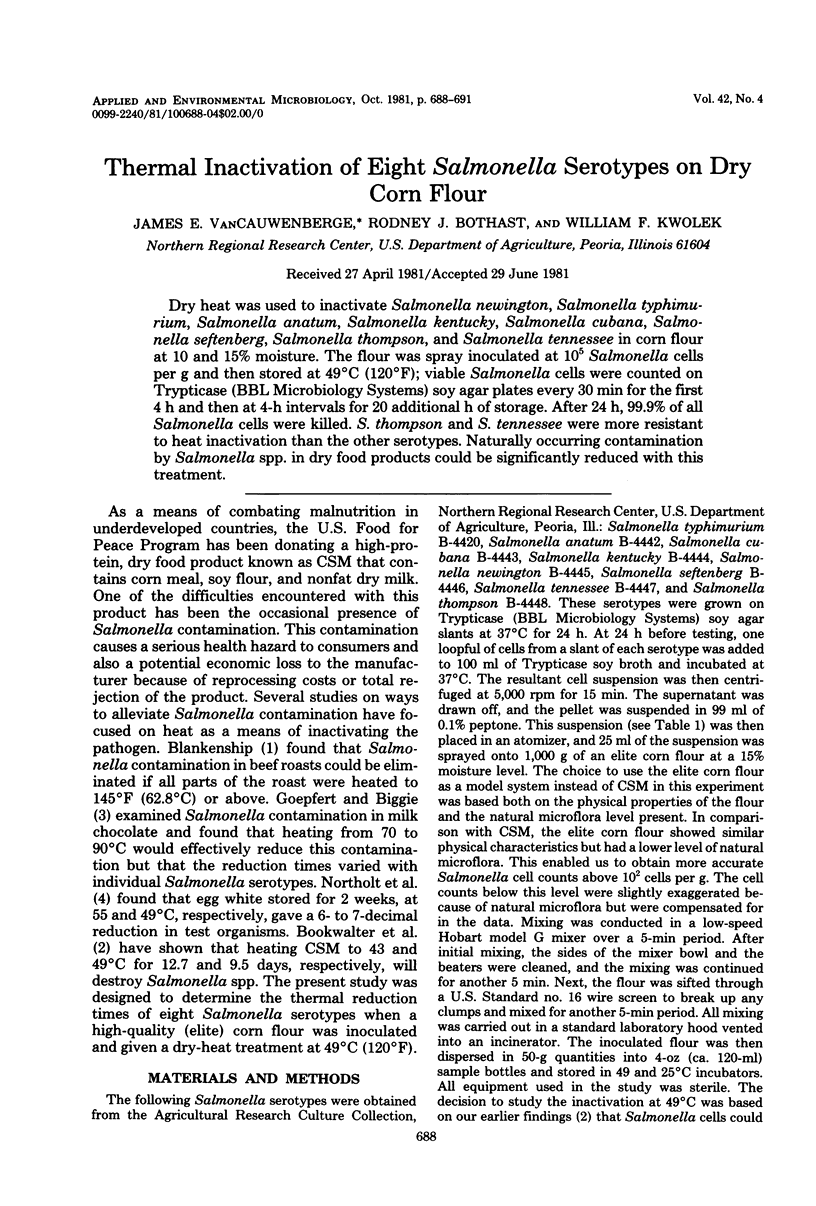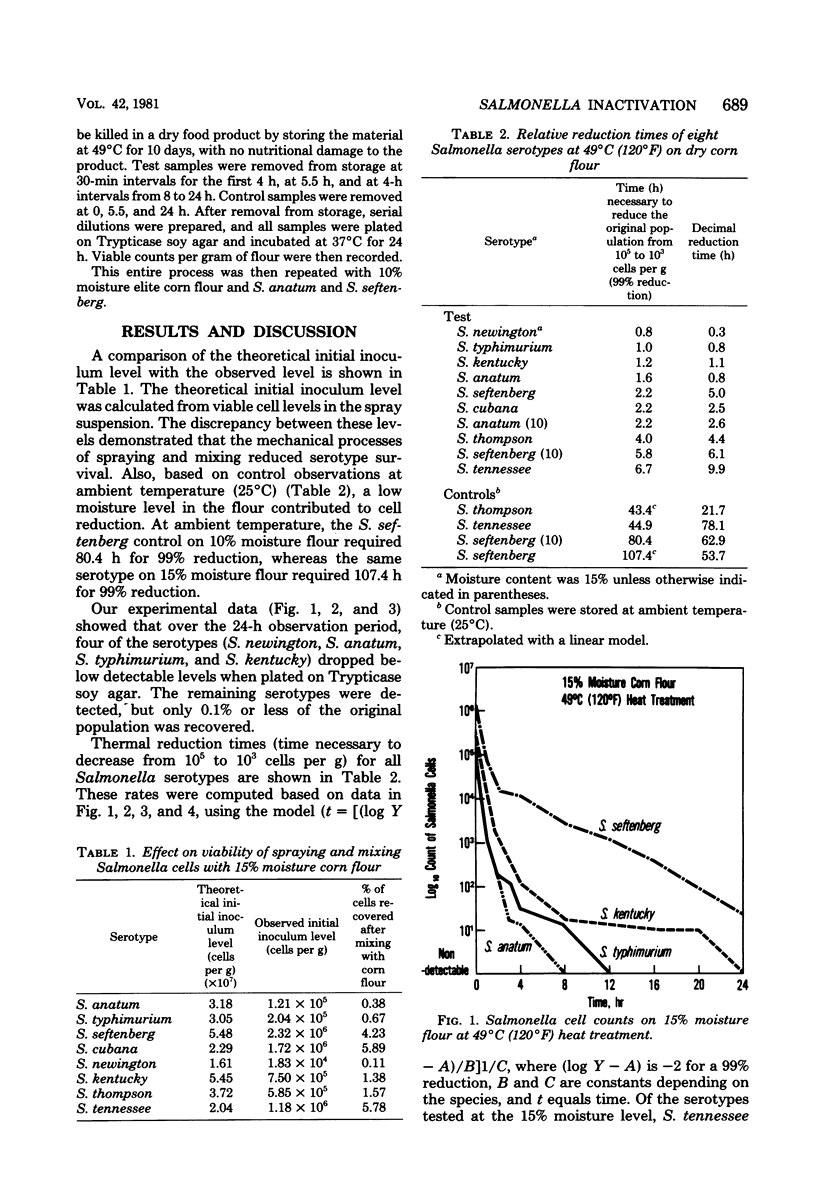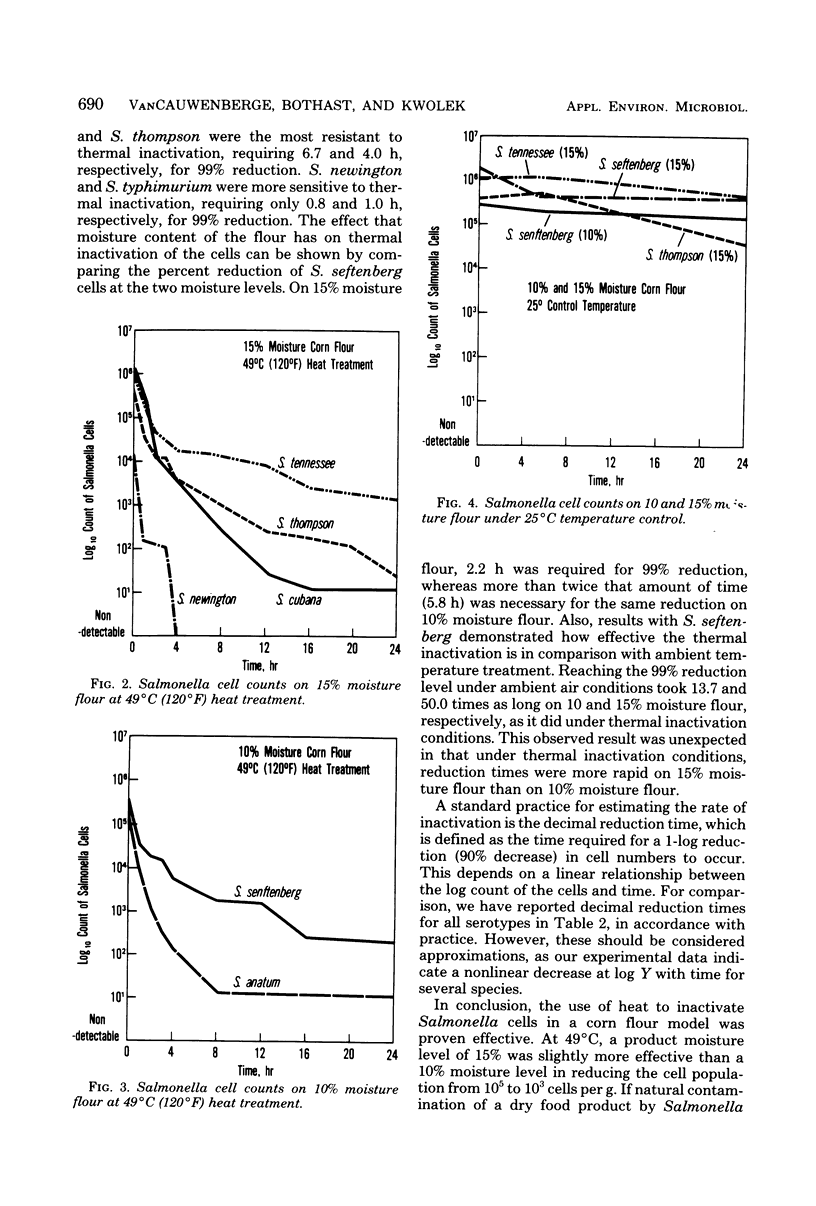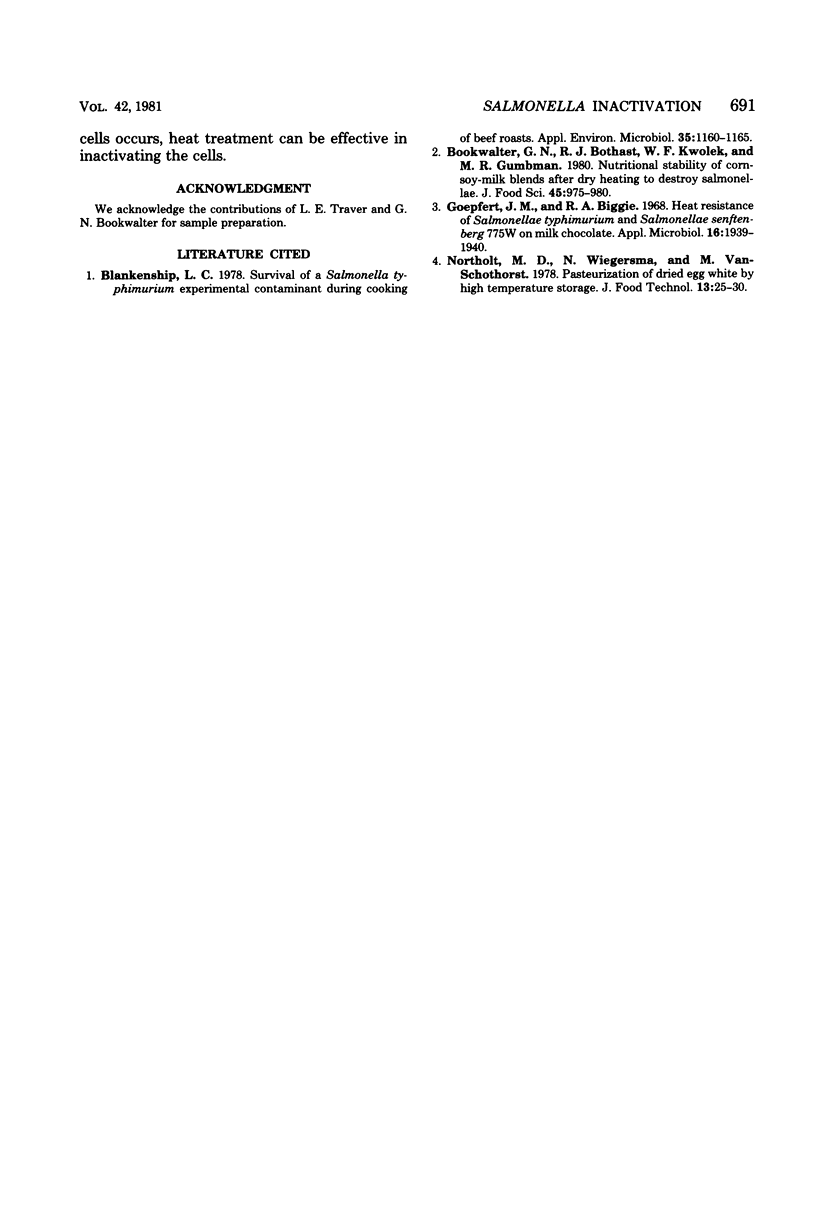Abstract
Dry heat was used to inactivate Salmonella newington, Salmonella typhimurium, Salmonella anatum, Salmonella kentucky, Salmonella cubana, Salmonella seftenberg, Salmonella thompson, and Salmonella tennessee in corn flour at 10 and 15% moisture. The flour was spray inoculated at 10(5) Salmonella cells per g and then stored at 49 degrees C (120 degrees F); viable Salmonella cells were counted on Trypticase (BBL Microbiology Systems) soy agar plates every 30 min for the first 4 h and then at 4-h intervals for 20 additional h of storage. After 24 h, 99.9% of all Salmonella cells were killed. S. thompson and S. tennessee were more resistant to heat inactivation than the other serotypes. Naturally occurring contamination by Salmonella spp. in dry food products could be significantly reduced with this treatment.
Full text
PDF



Selected References
These references are in PubMed. This may not be the complete list of references from this article.
- Blankenship L. C. Survival of a Salmonella typhimurium experimental contaminant during cooking of beef roasts. Appl Environ Microbiol. 1978 Jun;35(6):1160–1165. doi: 10.1128/aem.35.6.1160-1165.1978. [DOI] [PMC free article] [PubMed] [Google Scholar]
- Goepfert J. M., Biggie R. A. Heat resistance of Salmonella typhimurium and Salmonella senftenberg 775W in milk chocolate. Appl Microbiol. 1968 Dec;16(12):1939–1940. doi: 10.1128/am.16.12.1939-1940.1968. [DOI] [PMC free article] [PubMed] [Google Scholar]


